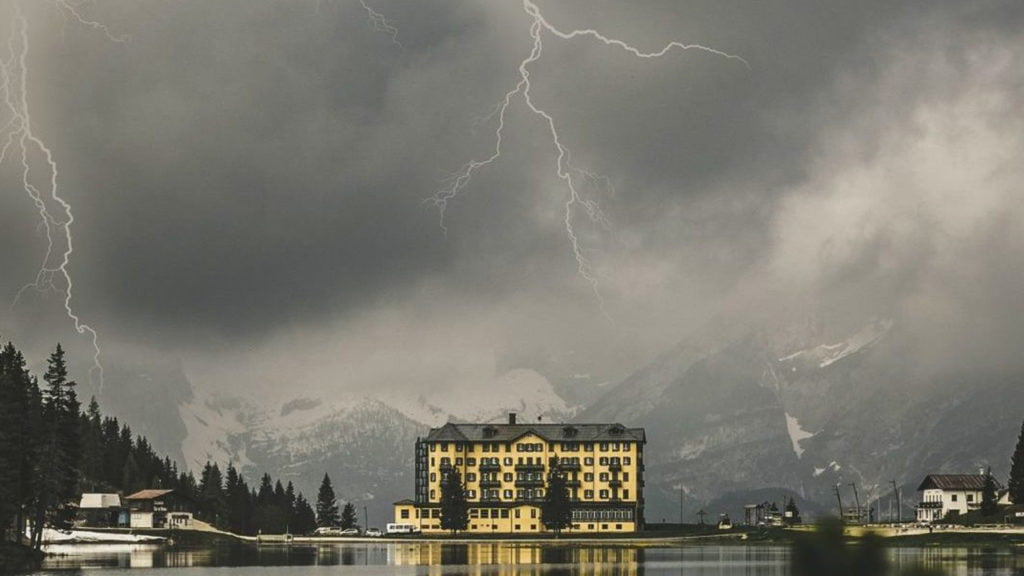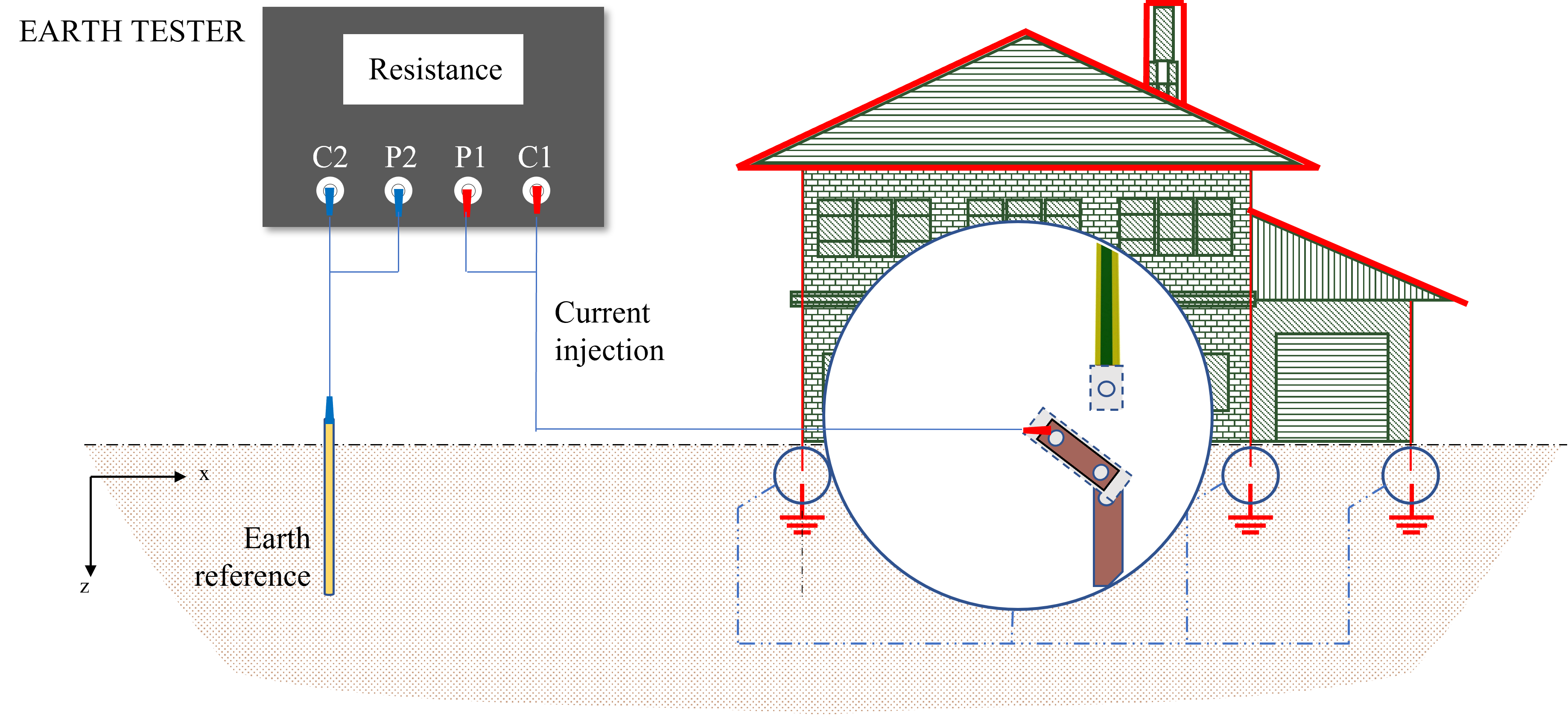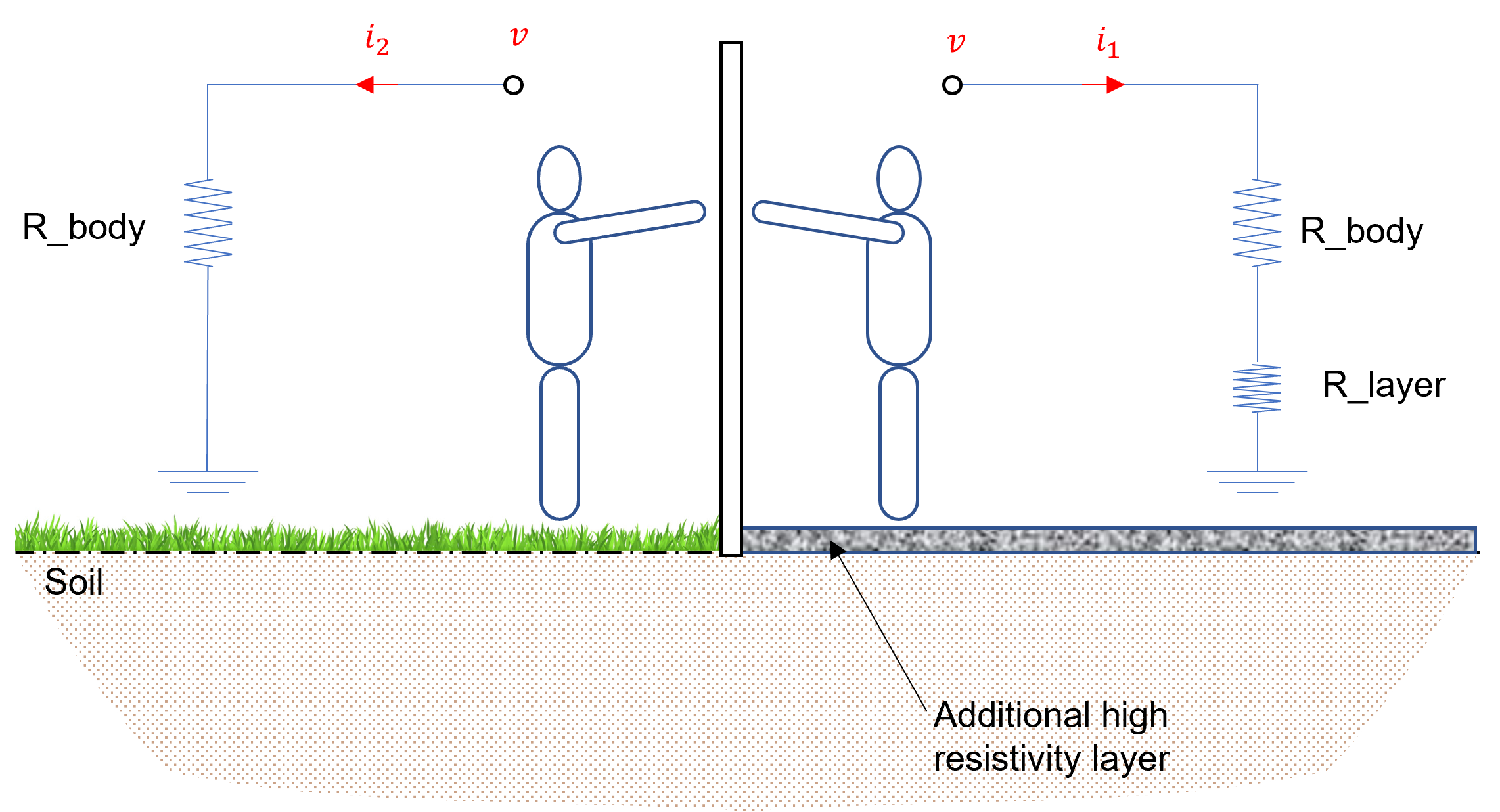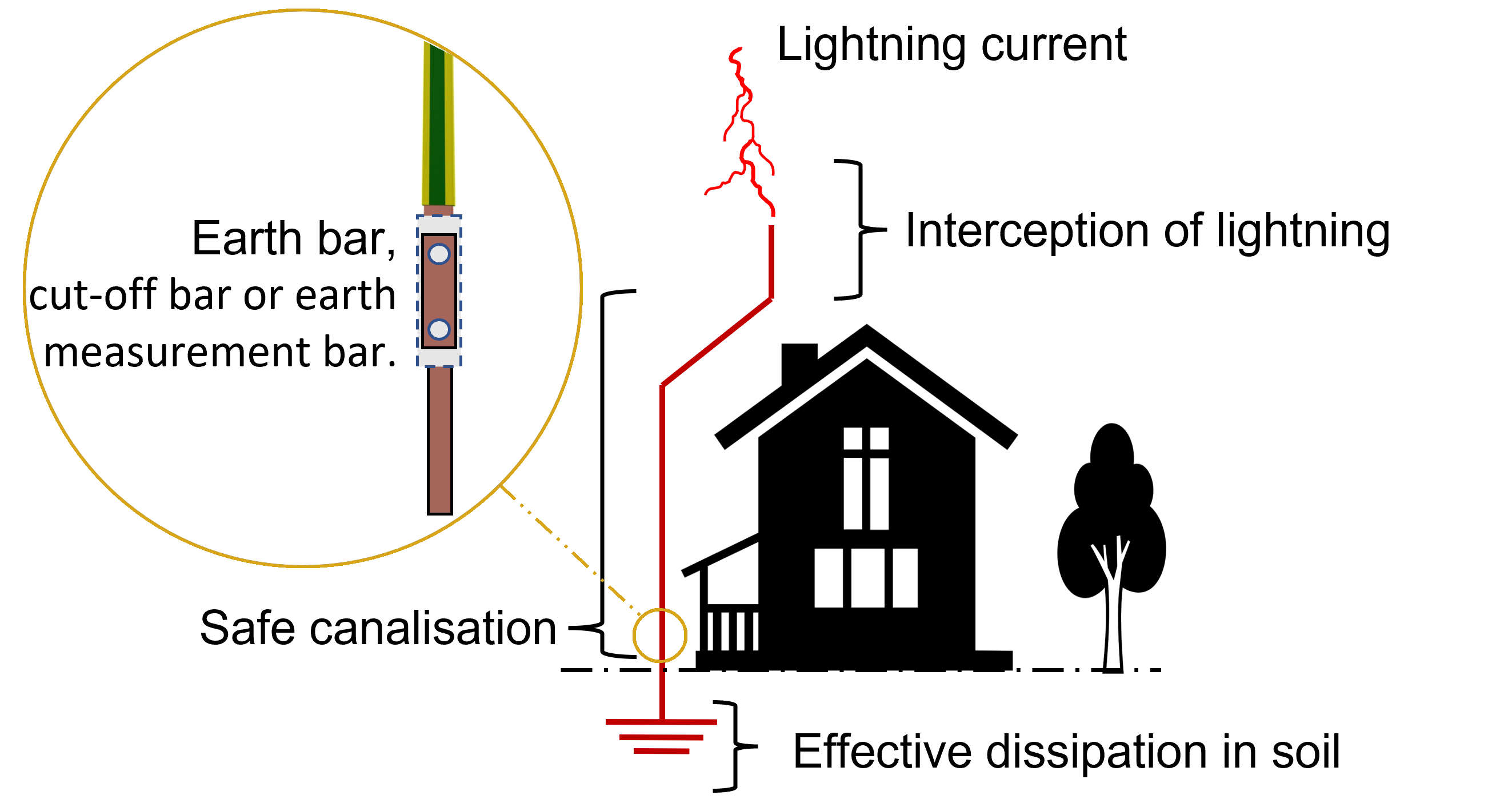Knowing fact from fiction when it comes to lightning safety is important.
To better protect our Kingsmill Industries’ community and get “Down to Earth”, we gathered five commonly known myths and debunked them to keep you aware of the best ways to stay safe when it comes to lightning.
Lightning Myth #1 – If you’re at home, then you’re safe from lightning.
Indoors is always a safer bet than outdoors during a storm. Remember the saying, “When it roars, go indoors.” Keep in mind though, that a house not equipped with a proper lightning protection system poses some dangers. When a Risk Assessment is performed, based on what level of lightning protection the structure is placed in, different accommodations are made to protect the building from direct and indirect lightning strikes.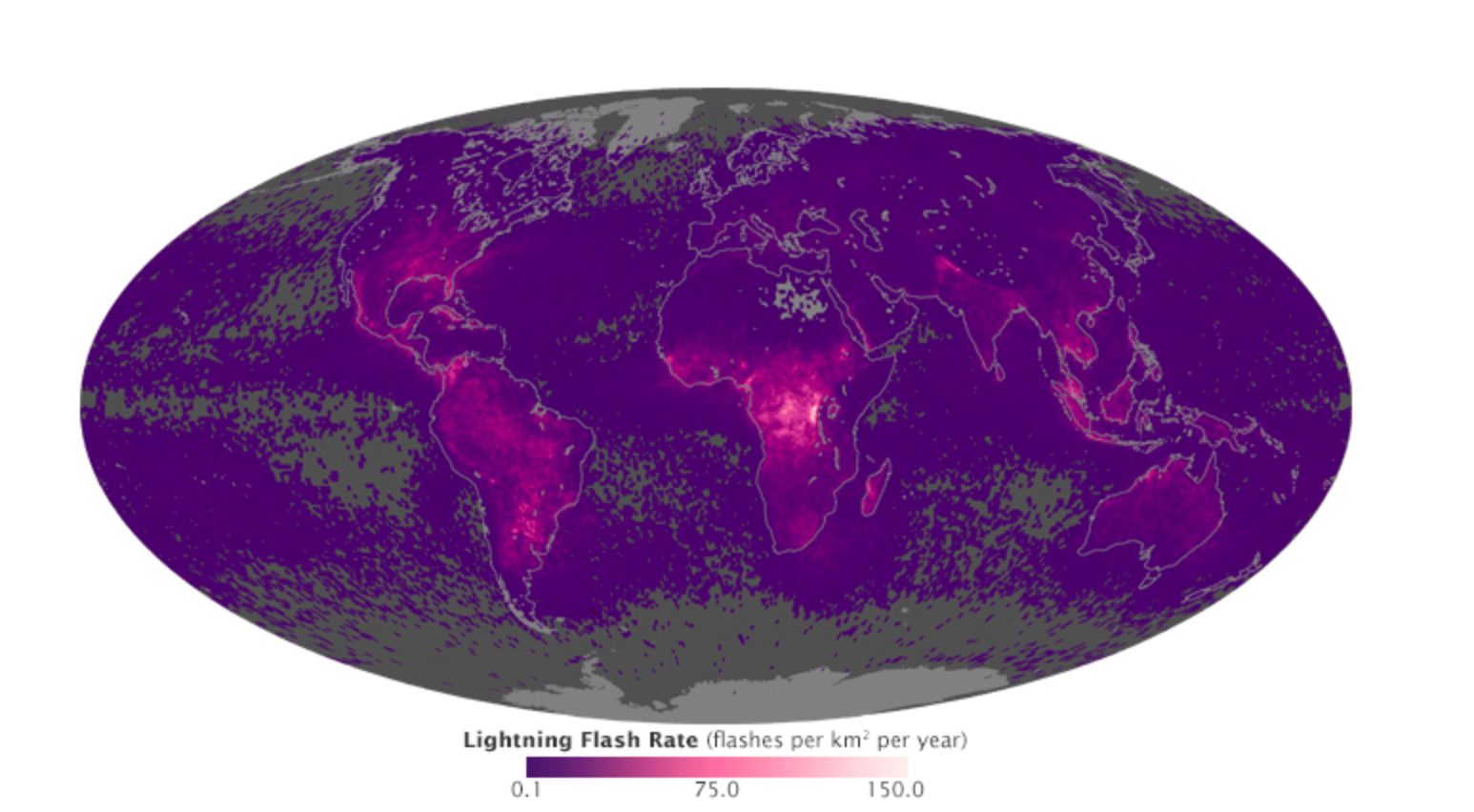
To clarify even further, if we look at the map that NASA provides regarding the frequency of lightning, we can see that the further we get from the Equatorial Belt, the less lightning strikes an area experiences. That said, based on the EN:62305 Risk Assessment, the further North we go, such as the United Kingdom, the less we might perceive that structural protection is not needed, due to less lightning density. That being the case, does not mean that surge protection is not required or strongly recommended for all structures.
According to the new 18th Edition Wiring Regulations or BS:7671, a Risk Assessment should be carried out to determine if surge protection is required for all new homes and businesses in the UK. For all households, old or new, it doesn’t hurt to have a level of lightning protection based on your structure’s Risk Assessment. Think about it as insurance- when you need it, it will be there to protect your electrical equipment.
Just to further elaborate, to show where lightning protection, which includes Surge Protection, would be required or strongly recommended, would be places such as the United States, specifically the Midwest and the South, the Tropics, Central Africa, and any other country close or on the Equator. Again, we would complete a Risk Assessment to fully provide the needed protection against direct and indirect lightning strikes.
Regardless of where you live in the world, it would be our pleasure to help you assess and develop the protection that your homes or businesses need.
A good Lightning Protection System (LPS) always includes the following:
- Air Termination/Down Conductor System
- To intercept the lightning strike
- Comprises Air Terminals, conductors, fixings and clamps
- Equipotential Bonding
- To minimize dangerous flashover from the Lightning Protection System to metallic/connective parts of the structure and its contents
- To route lightning current safely towards the Earthing system
- Earth Termination Network
- To safely dissipate the lightning current to Earth
- Comprises conductors, Earth rods, clamps, and bonds
- Surge Protection
- To safely arrest any overvoltage carried through power and data lines as a result of lightning
- Comprises surge and overvoltage arresters
Protecting your home externally and internally with a lightning protection system guarantees a safer place for you and your loved ones.
Side note- Just think about all those electronics you have in your home and how dependent you are on them. Well, when it’s raining and lightning outside, all we want to do is sit on the couch and watch something on TV- Netflix and chill. But, did you know that our electronics alone are at greater risk of getting struck by lightning than the building itself.
Don’t ignore the potential damages that lightning can cause to your everyday life. Invest in a proper lightning protection system, and let it keep you and your electronics protected for those rainy days.
Lightning Myth #2 – The taller the building, the more likely it will get struck by lightning.
Lightning will strike whatever it desires, buildings, trees, mountains, cars, etc. It is important to be aware of both direct and indirect lightning strikes and the damages that they can create. Lightning up to 1 km away can wreak havoc on your homes, especially, as we mentioned before, your electronic systems.
Although taller buildings are more susceptible, as they might produce a stronger upward leader, lightning will still strike whatever it pleases. Its target is unpredictable. Interesting fact to know- The way a lightning strike is formed is through the build-up of the field intensity between the cloud and the ground. The build-up of these electrical charges in the cloud-base and the subsequent connection and strength of the upward leader to a downward streamer determines where lightning could potentially strike.
However, as we are talking about taller buildings, at Kingsmill Industries, we would recommend a lightning protection system that includes both structural lightning protection, as well as surge protection. There are several methodologies that can be employed to design a structural lightning protection scheme, notably, the Rolling Sphere, The Mesh system and the Protective Angle method, or a combination of the above.
For more information regarding our different designs of Air Termination Networks (ATN), check out our catalogue
Talking about ATN- Have you ever looked up at a tall building or skyscraper, and seen a rod at the very top, or in the case of the United Kingdom noticed a lot of thin masts around the edge of the roof? These are often a sure sign that a structural lightning protection system has been fitted.
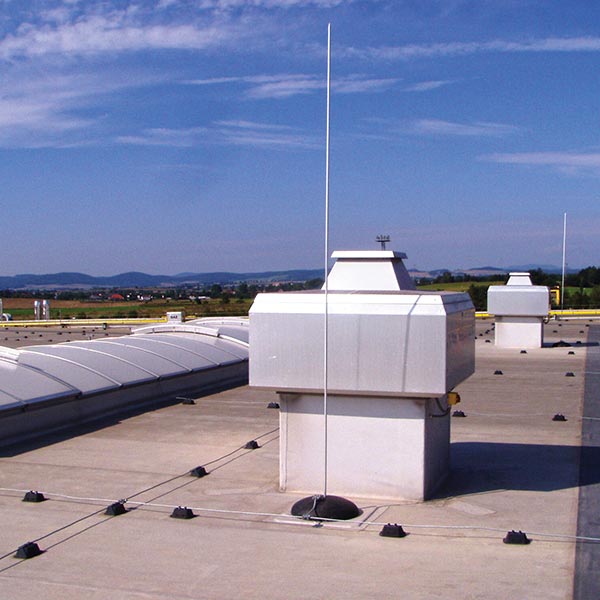
Air Terminals or Masts are part of the Lightning Protection System, that catches the lightning strike. Based on the geometry of the property, we help our clients decide which design of an Air Termination Network best protects their building.
Integral to our designs, would additionally be the installation of Equipotential Bonding, an Earth Termination Network, and Surge Protection to fully protect the building and its electronic contents, from both direct and indirect lightning strikes.
Regardless of the building size and height, all need protection with a proper Lightning Protection System. The level of protection, whether it’s structural or as simple as the application of surge protection devices, is based on the Risk Assessment that is completed.
Lightning Myth #3 – Lightning only strikes metal objects as they can conduct the surge.
Lightning will strike anything on its path. Remember, it always seeks a route to Earth with the least electrical resistance, so internal and external protection is essential to minimize the damages that lightning causes. While metal can serve as a conductor, lightning can still strike structures that are metal free, such as trees, water, people, mountains, etc.
Lightning forms when the electrical charges in a cloud separate (ice crystals tend to be a positive charge and water droplets a negative charge), and the cloud base tries to equalize its build-up of charge with the ground by initiating downward stepped leaders. These stepped leaders are believed to move in invisible 50m steps. The large charge in the cloud base creates an opposite charge on the ground, and as the stepped leaders get closer to the ground, upward streamers begin forming. When these two paths meet and try to equalize, lightning is created and becomes visible to the human eye producing a bright flash known as a return stroke.
During the build-up of electrical fields, any object that protrudes from the surface of the ground, metal or not, can emit an upward streamer. Meaning, that metal is definitely a good conductor of lightning, but as are other things.
As humans, we create metal pathways for lightning through our water pipes, cables, and really, the overall building structure itself. When lightning strikes a building, it usually tries to find a metallic or conductive path to Earth, hence why sometimes it can blow chunks of concrete off a building in its attempt to reach that path. In that same manner, the heat from lighting can cause dry timber in buildings to catch fire, and tiles to come off roofs due to the rapid movement of air around a stroke.
In a Lightning Protection System (LPS), metallic lightning conductors are used in conjunction with a low resistivity Earth Terminal to encourage lightning to take a different path, one that humans have engineered, rather than its natural course. This re-routing, per say, minimizes the damages inflicted by lightning strikes.
We cannot stress enough the importance of a Lightning Protection System to protect you and your loved ones from these types of disasters.
A Lightning Protection System will reduce damages caused by the following types of strikes (BS:EN 62305):
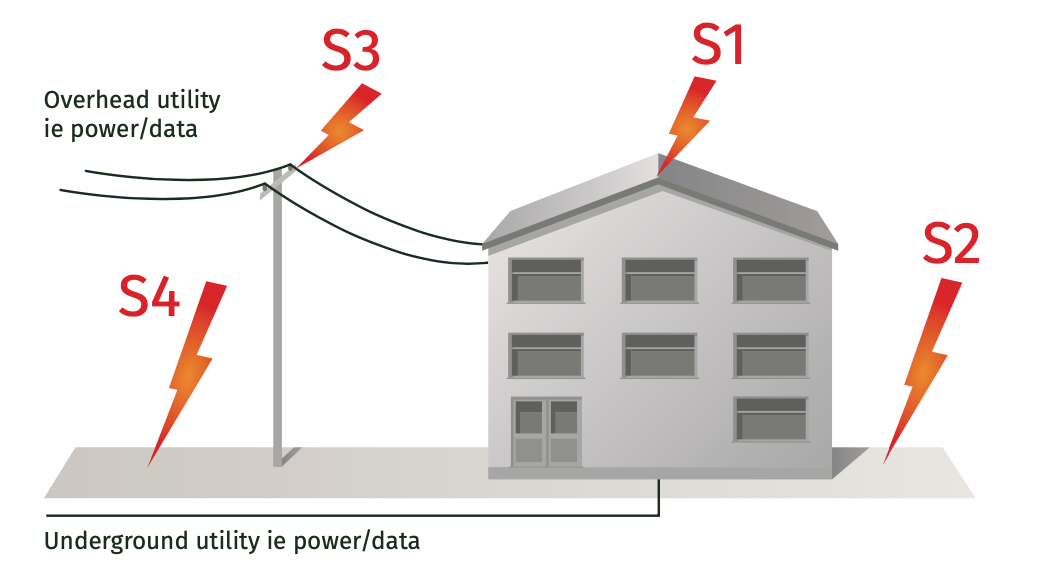
- Strike to the structure,
- Strike to the ground near the structure,
- Strike to the overhead utilities connected to the structure, and
- Strike near the utilities connected to the structure.
Our Lightning Protection System keeps all these types of strikes in mind to better protect you and your surroundings. Let us help you make sure that your homes and businesses are protected.
Check out our website at www.kingsmillindustries.com to learn more about the importance of a Lightning Protection System.
Lightning Myth #4 – If I have surge protectors installed in my home, then my home is protected against lightning.
While having surge protection is definitely a step in the right direction, it does not protect your home from a direct lightning strike. To protect your structure, a proper LPS, as we discussed before must fully be installed, and must also include in addition to the Surge Protection, the Air Termination Network (ATN), Equipotential Bonding, and an Earth Network.
Each part of the system plays an important role in protecting your home and its surroundings.
Surge Protection focuses on the electronics in your homes and businesses ranging from our basic electricity, TVs, outlets, oven, fridge, computers, you name it and it uses electricity, it probably is protecting it. So as you can see, it is definitely important to have it installed, as today, our lives are more than ever are dependent on our electronics. It’s extremely important to learn more about the importance and need for surge protection devices, we’ve devised a specific piece for it on our website, and also make sure to check the benefits of a surge protection device.
Each part of the Lightning Protection System plays an important role in protecting your homes, businesses, and its surroundings.
If you don’t have surge protection devices (SPDs) already installed, we have a range of products that can ensure the safety of your electronics. Feel free to check them out in our catalogue or on our website. And of course, you can always reach out to us at [email protected].
Lightning Myth #5 – Lightning never strikes the same place twice.
We probably sound like a broken record by now, but we will say it again anyway just because it is really important. Lightning can strike anywhere it likes, as many times as it chooses. And because of that, to keep you and your homes safe, we strongly recommend a lightning protection system to prevent damages caused by lightning.
Think of it this way. A LPS places a shield over your home. So, if lightning was to strike directly or indirectly up to 1 km away, your home is protected. The types of damages resulting from a lightning strike are identified as the following:
- Injury to life through step and touch voltages
- Physical damage i.e. Fire, explosion, etc.
- Failure/malfunction or electronic systems arising from lightning electromagnetic pulse.
Don’t wait for something bad to happen to realize how important it is to protect your homes and businesses from lightning. Lightning is an underrated killer, and the more proactive we are about protection, the stronger we become in preventing these types of damages.
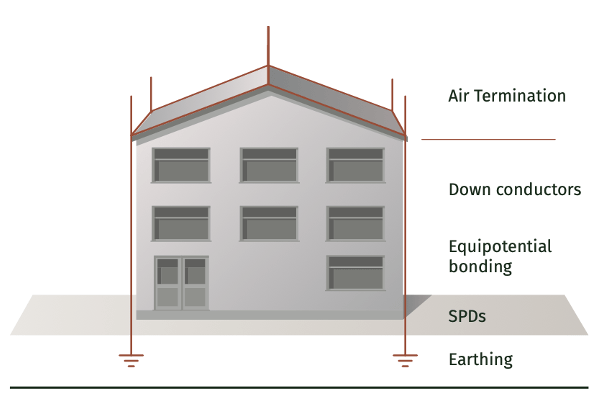
So if there is anything that we want you to take out of this article, it’s that a Lightning Protection System (LPS) that includes an Air Termination Network (ATN), Equipotential Bonding, Earthing Network, and Surge Protection, is a proven to ensure your safety when it comes to direct and indirect lightning strikes. Our method guarantees safety from the ground, up, and protects the structure and its surroundings.
There are many more myths about lightning out there, but when it comes to protecting your homes, businesses, and loved ones, it’s important to keep in mind what you just read.
For any further questions, please don’t hesitate to reach out to us at [email protected]. Or contact us through our website to submit a query.
Our goal is to keep you safe. We want to assist with any of your earthing and lightning protection needs!
Also, don’t forget to follow us on our social media pages to stay up to date and “Down to Earth” with all things Kingsmill Industries!
| https://www.linkedin.com/company/kingsmillindustries | |
| https://www.facebook.com/kingsmillIndustries | |
| https://twitter.com/KingsmillInd |

